Types of Damage
Damage in earthquakes is mainly due to shaking.
How strongly the ground shakes in a particular location is a result of earthquake magnitude, the distance away from the earthquake source, the orientation and type of fault movement, and the type of ground material such as bedrock or soft soil.
An area that did not shake strongly in one earthquake may be severely affected in another. All areas of Northern California have experienced strong ground shaking in the past and will again in the future.
Ground shaking can cause poorly-built structures to collapse. In California, where building codes have included seismic design requirements for more than 80 years, the most likely result of ground shaking is falling items within homes and businesses. Lights, television sets, bookshelves, cupboard contents and other objects can topple over and injure you!
Your home or business may escape major damage in the next Northern California earthquake, but downed power lines, damaged bridges and broken water lines will disrupt infrastructure and could isolate you at home, at work or in your car. The actions you take now to plan and to strengthen your home will reduce your losses. Find out how you can prepare on pages 18-25.
Destructive Fires

Earthquakes and tsunamis are often followed by fires because gas lines may break, electrical shorts cause sparks, damaged water tanks and broken pipes limit water for fire fighting, and damaged roads prevent fire fighter access. The 1964 tsunami caused this fire in Crescent City that burned for three days.
Landslides
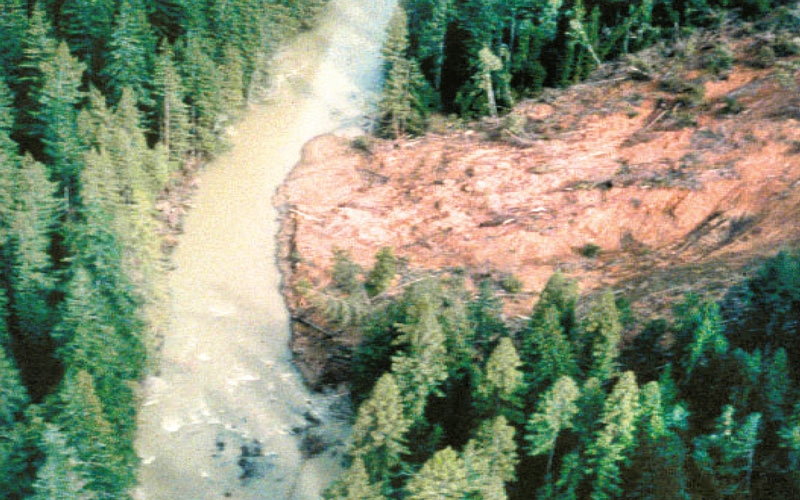
Earthquakes can trigger landslides that damage roads, buildings, pipelines and other infrastructure. Northern California has steep slopes underlain by loose rock that is highly susceptible to landslides. Landslides may temporarily dam rivers and cause a destructive flood hazard when the rivers break through. The Navarro River in this photo was temporarily dammed by a landslide in 1995.
Hazardous materials
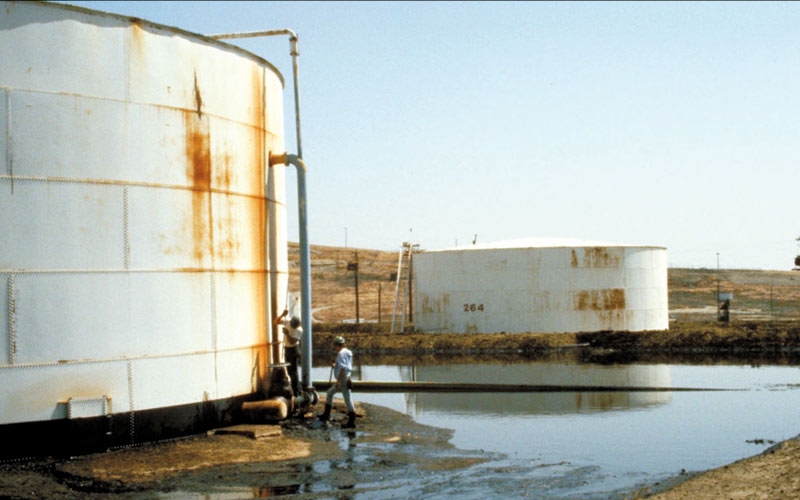
Chemicals, pesticides and other hazardous materials can be released when industrial plants, laboratories and other facilities are damaged in an earthquake. Oil was released when these tanks failed during the 1983 M 6.5 Coalinga earthquake.
Damaged infrastructure
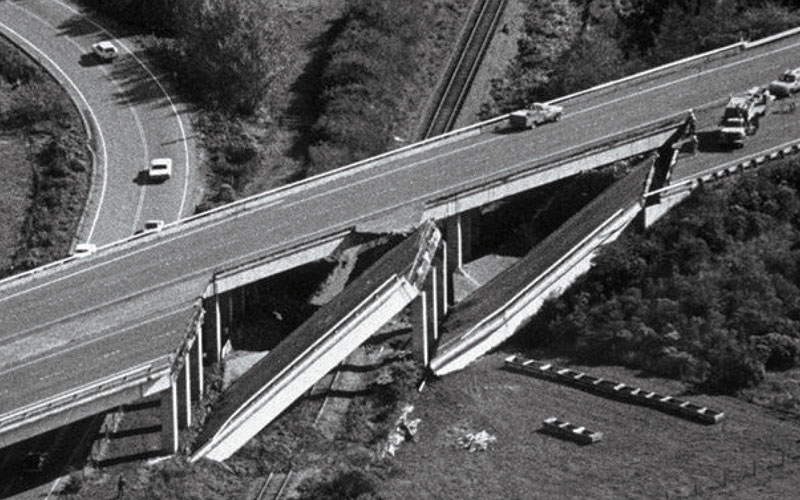
Earthquakes often damage roads, which can hinder rescue and recovery efforts and may cause accidents. Ruptured pipelines result in water loss and can cause “sinkholes” that undermine roads and buildings. Damage to gas and electrical systems can cause fires, as well as major service outages. This Highway 101 overpass south of Eureka collapsed in the November 1980 M 7.2 earthquake.
Dam failures
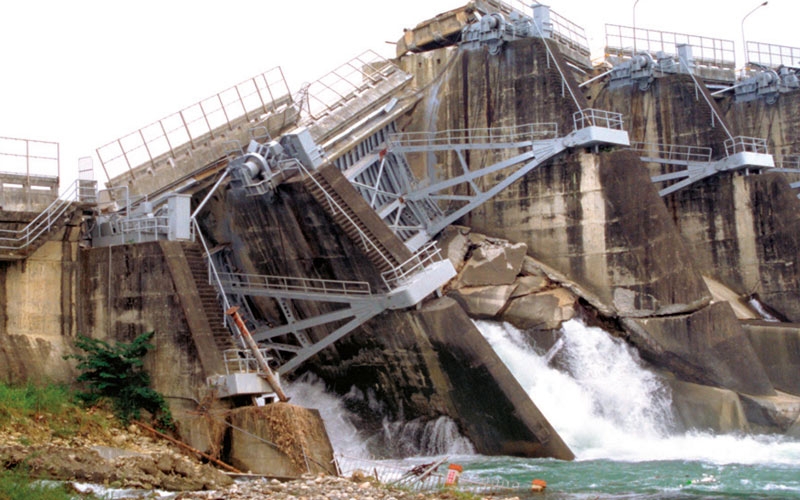
Earthquake shaking and fault rupture can cause dams to fail, potentially causing catastrophic downstream flooding, reduced water supply and contamination. This photo shows the failure of the Shihkang Dam, the largest concrete gravity dam in Taiwan, caused by the 1999 M 7.6 Chi Chi, Taiwan earthquake.
Liquefaction

Strong ground shaking can cause loose soil and fill to behave like a liquid. Liquefied ground loses its strength causing slumps and fractures that can disrupt roads and cause buried gas and water lines to break. This hazard is greatest in saturated low-lying areas of loose, sandy soils or poorly compacted fill. The photo was taken shortly after the 1906 earthquake and shows liquefaction-caused slope failures on the banks of the Eel River.
Surface rupture
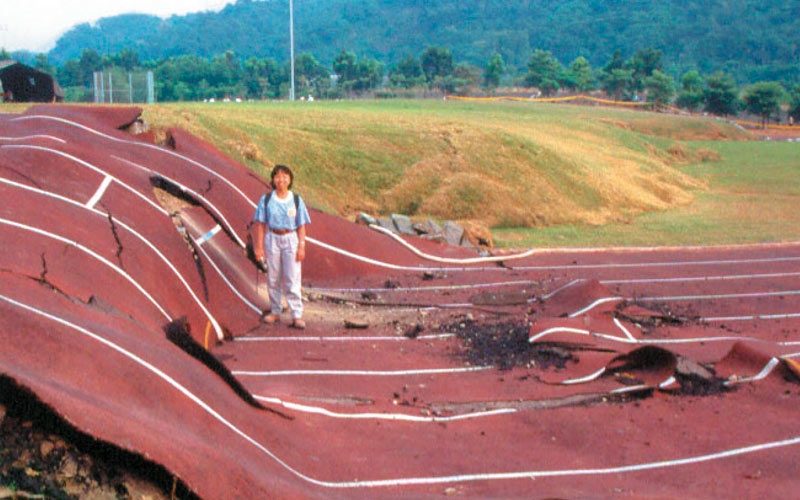
Fault movements can break the ground surface, damaging buildings and other structures and breaking pipe lines. This track at a high school in Taiwan was deformed when a thrust fault ruptured the ground in 1999.